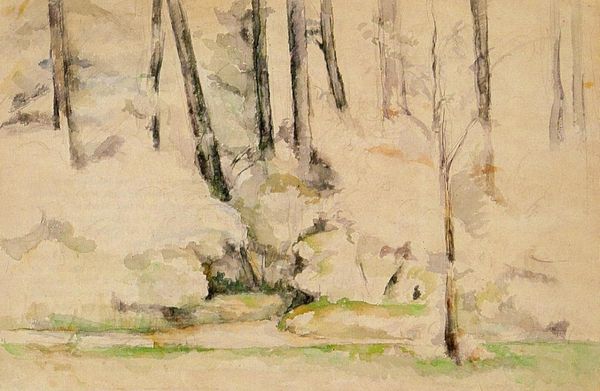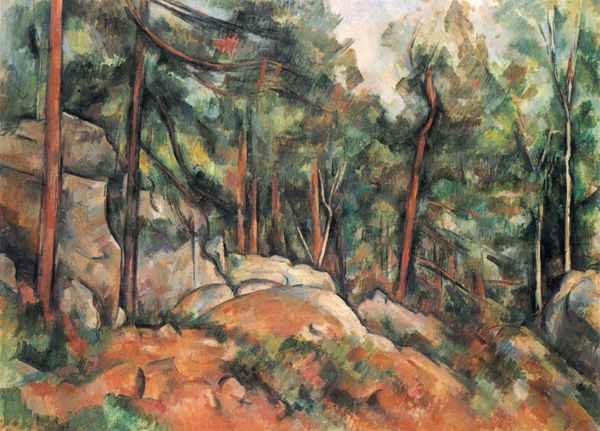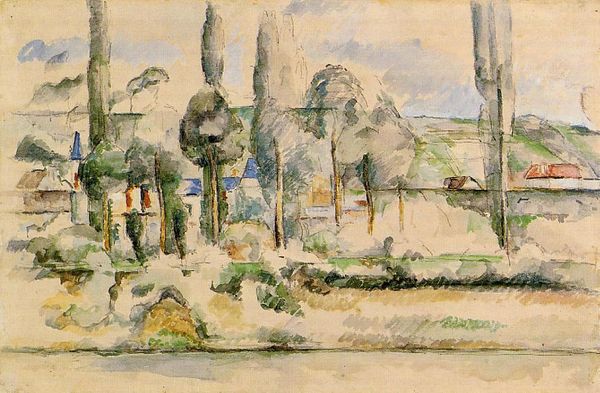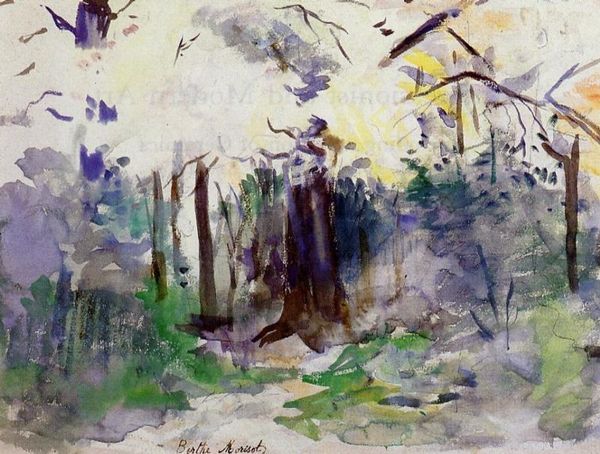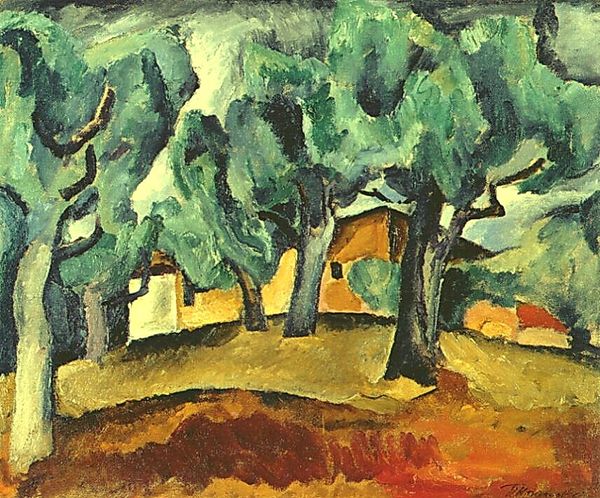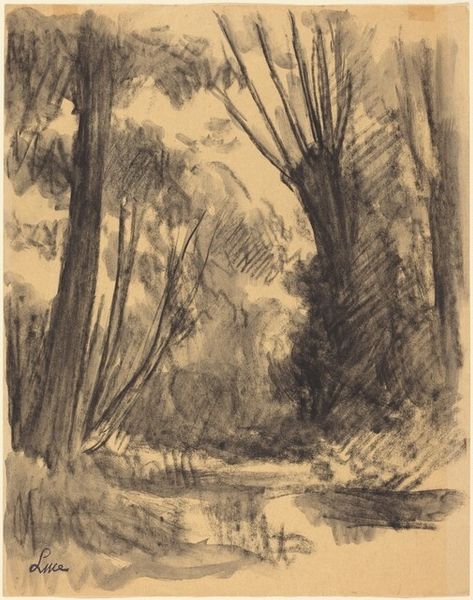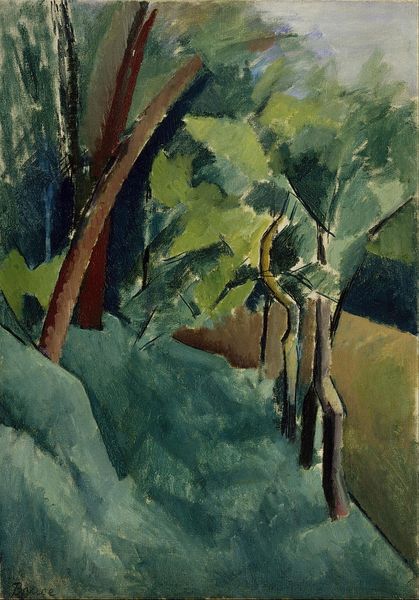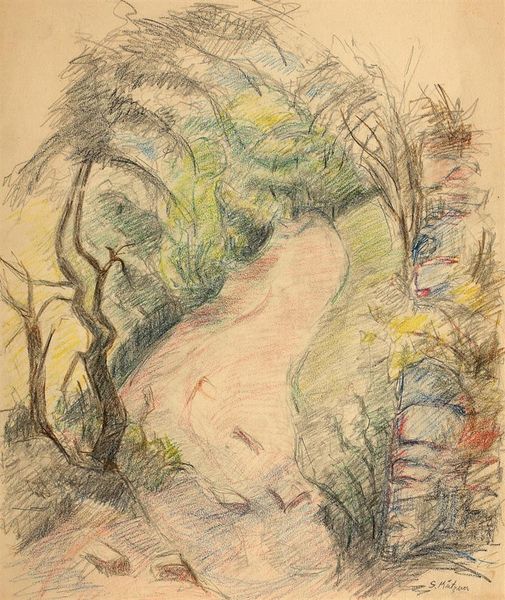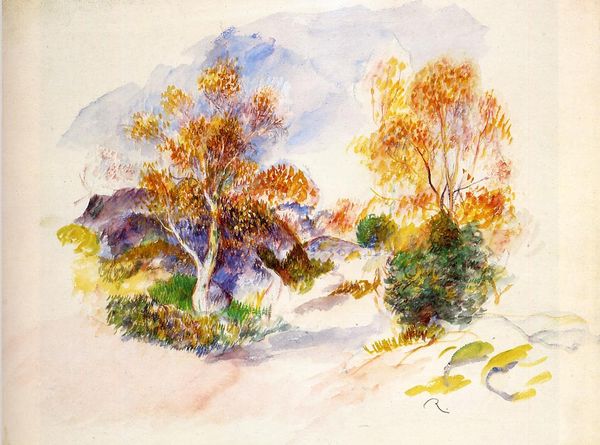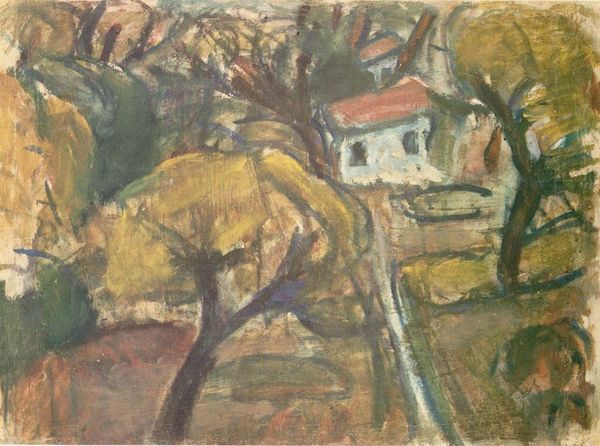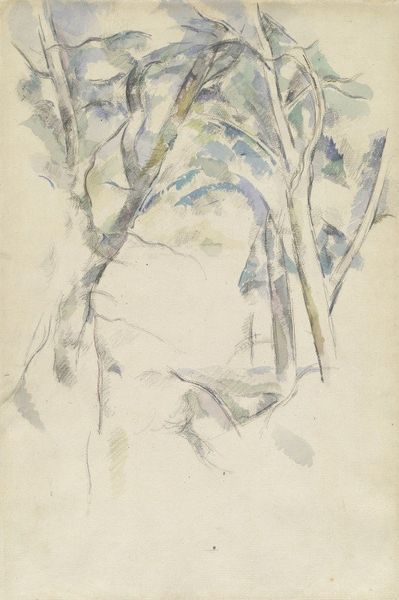
plein-air, watercolor
#
impressionism
#
plein-air
#
landscape
#
watercolor
#
coloured pencil
Copyright: Public domain
Curator: Paul Cézanne's watercolor, "Trees," created around 1884, offers a glimpse into the artist’s exploration of form and perception. Editor: Immediately, I'm struck by the sparseness of it all. The limited palette creates an airy, almost weightless feel. It seems like a fleeting moment captured. Curator: Indeed, that lightness arises from the medium itself. Cézanne masterfully manipulates watercolor to define the trees' skeletal forms and subtle variations in light and shadow. Observe how he uses colour pencil alongside it too, that he likely employed to give additional structure, especially in areas where the watercolor may be fainter. Editor: Right, it's evident in the bareness. Considering plein-air paintings, the application, and its accessibility must have contributed to its style too. You see the layering of thin washes, creating depth and atmospheric perspective, yet the skeletal structures retain a raw feeling. There's a sense of immediacy and economy of means. Curator: Exactly. Cézanne isn't simply depicting trees; he's deconstructing the scene into its essential components. Each stroke functions as a unit of representation, a building block in the overall structure. Think of his later experiments with fractured forms in his paintings; this watercolor hints at that analytical approach. We observe the formal relationships between the elements. Note how the blank spaces become just as crucial as the rendered parts. Editor: And I would wager this reveals that while we consider him a genius now, such loose works may have been frowned upon as too simplistic then. He took something like watercolor painting which might be considered for beginners or casual work, and challenged the expectations of it, its accessibility being something that shouldn’t detract from the value or perception of skill within this painting. Curator: Perhaps. Regardless, Cézanne transforms a seemingly ordinary landscape into a study of abstract principles of construction and vision. This is, in its essence, a very advanced method that we see as foundational within his trajectory. Editor: Absolutely, and viewed through a Materialist lens, its seemingly casual technique carries considerable artistic power, by elevating an easy method through skill and genius, allowing his contribution to speak volumes on later modernist artists' explorations in everyday media. Curator: A valuable insight – thank you! Editor: Thank you!
Comments
No comments
Be the first to comment and join the conversation on the ultimate creative platform.
